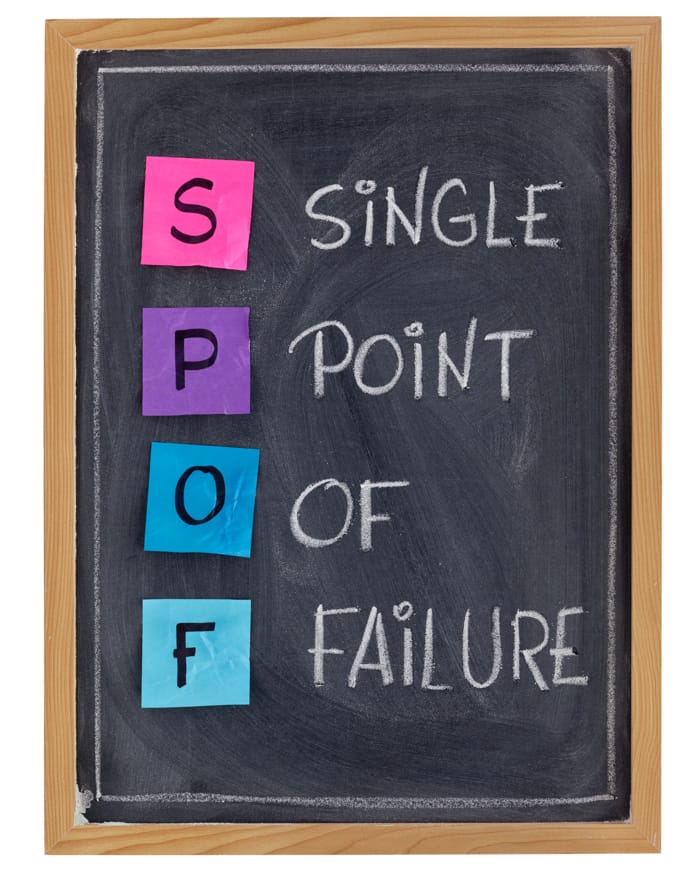Since I’ve spent the last decade serving brilliant technical people, I’ve heard many times about avoiding single points of failure when building systems.
A single point of failure is a part of a system that, if it fails, takes down the entire rest of the system too.
It’s why the people who build airplanes design several redundant systems, so if one fails in-flight, a secondary or tertiary system can take over and maintain full functionality. It’s the reason buildings have multiple elevators. In addition to reducing wait times, people keep moving when a unit or two is down for maintenance.
Technology and design practices have evolved substantially since that dawn of the industrial age to greatly minimize single points of failure in systems.
Except when the system involves people.
Just recently, a client mentioned that his new manager requires every document their organization creates to go directly though him to make regular adjustments and compile final numbers. In other organizations he’s worked with in the company, the person who assembled the report would take care of this kind of data entry. For some reason, the manager insists on doing this all himself.
He pointed out to me that he’s noticed several things about this group that are different from other groups he’s worked in:
- Overall work output is slower.
- The manager works longer hours.
- Most people in the organization seem content with completing the bare minimum.
The net result is that the manager has become the single point of failure in the organizational system. Without them, the organization would, at least for a time, come to screeching halt.
Without knowing details, the system appears ludicrous. Yet, it’s likely the manager justified this workflow using some or all of the below:
- I can do it better than anybody else.
- It will take longer to train people than to do it myself.
- It’s ultimately my name on the line if people screw up.
- I want to be the hero.
I sympathize with all the above since I’ve made most of these justifications too. In reality, managers can often do the work better, save time in the short-term by doing the work themselves, and do indeed have their name on the line.
And, who hasn’t been tempted to be a hero?
But it creates unsustainable risk. And, the longer a single point failure system has worked, the more comfortable everyone gets with it.
The most effective leaders train their people well, use an effective delegation process, and empower their teams to do the work they’ve been hired for. They take their mantra from Lao-Tzu:
A leader is best when people barely know he exists, when his work is done, his aim fulfilled, they will say: we did it ourselves.
I worked for an organization that reinforced this mantra. After getting promoted, the future performance of the previous team that the employee worked with was still considered in their next evaluation. The message was clear:
An organizational system that relies chiefly on your presence is not sustainable.
Want more insight? Subscribe to Coaching for Leaders, an independently produced, weekly podcast that's been downloaded 10 millions times. Listen on Apple Podcasts, Google Podcasts, Overcast, Stitcher, TuneIn, or Spotify.




